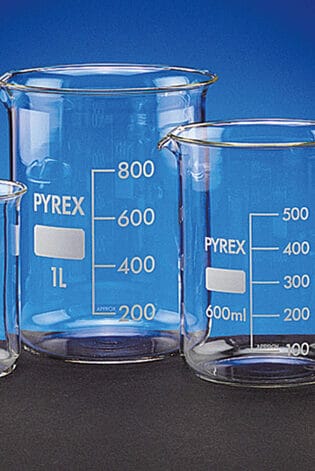- Your cart is empty
- Continue Shopping
Introduction of Laboratory Glassware
Glass is an amorphous solid that is commonly synthesized by rapidly cooling the molten form and has hard yet brittle properties. While glass does not necessarily have a specific composition, most laboratory glassware is made of borosilicate, due to its extraordinary properties such as chemical corrosion and thermal shock resistance, and the ability to withstand hot temperatures, pressures, and other extreme conditions.
There are various laboratory glassware available. However, the common glassware is presented in the following.
- Beakers: containers with cylindrical shape and flat bottom. These also have a spout and a lip, which serve as pouring and holding purposes, respectively. Beakers come in many sizes and are commonly used for mixing, heating, and measuring liquid.
- Erlenmeyer flasks: conical-shaped containers with narrow necks. These containers are employed for mixing and heating liquids.
- Graduated cylinders: glassware with cylindrical shape and graduation marked on their side. They are used for measuring liquid with higher accuracy than beakers.
- Burette: tube-shaped glassware with long and narrow features. It is also marked with graduation and has a stopcock at the bottom. It is commonly used for dispensing a precise drop of liquid, particularly in titration.
- Pipettes: small tube-shaped glassware with a tip and a rubber bulb as a suction device. Pipettes are used to transfer a small amount of liquid.

